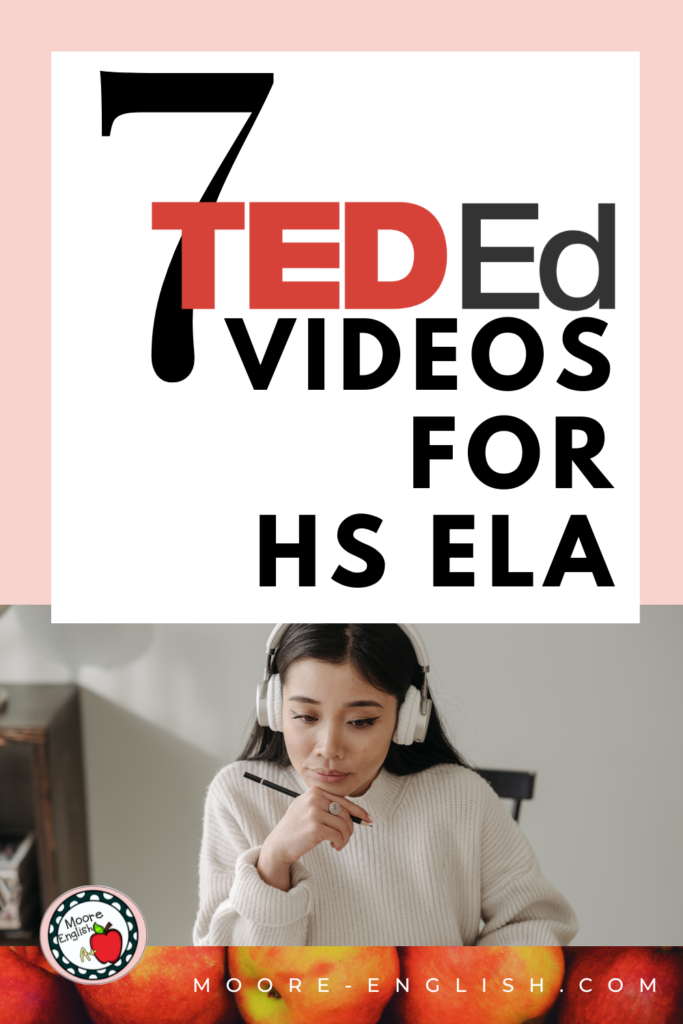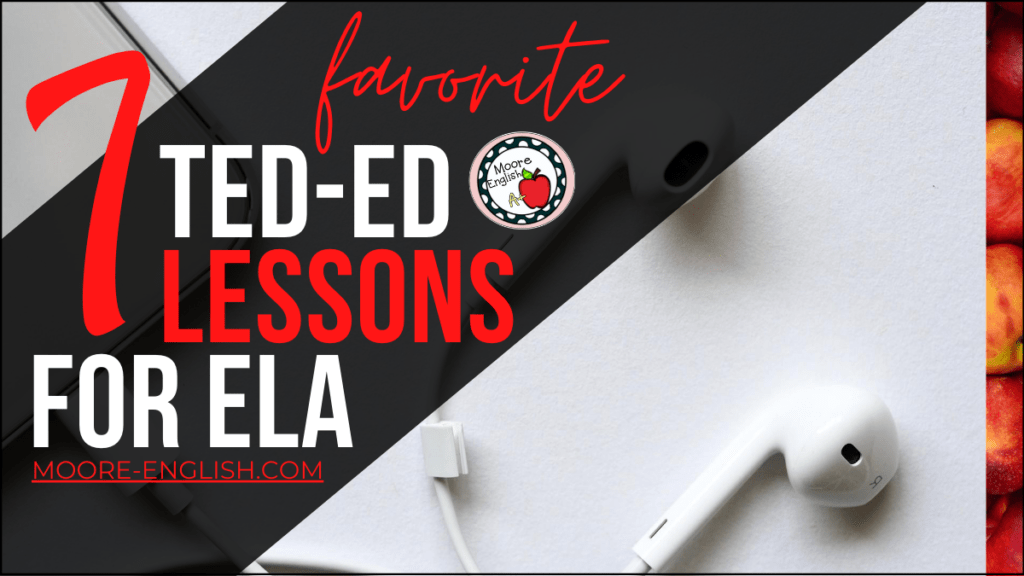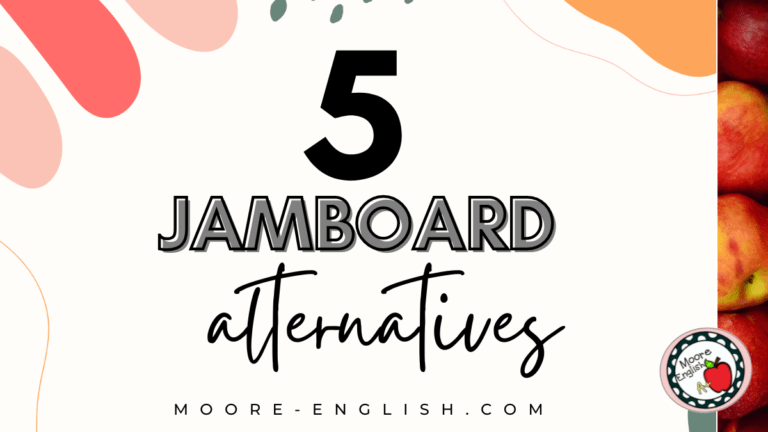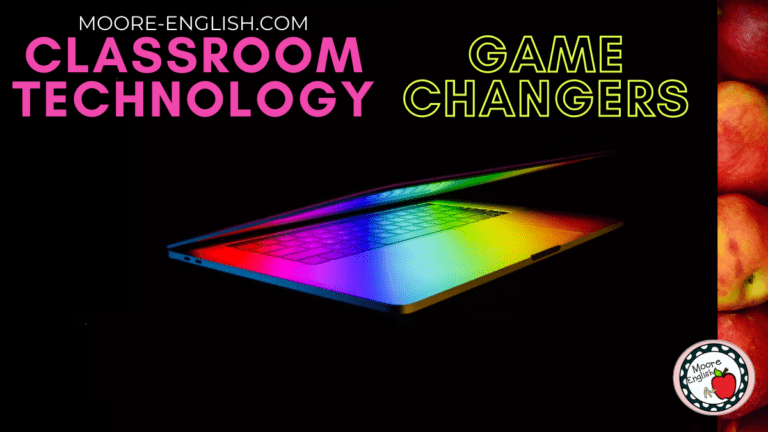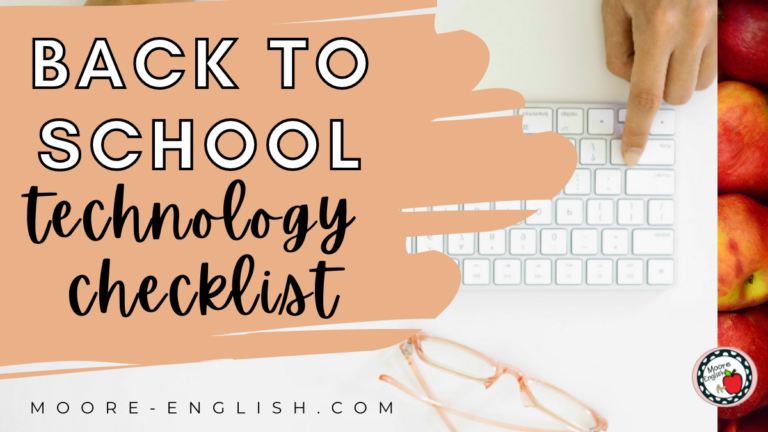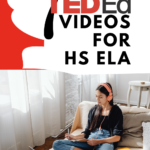In a world of distance learning and educational technology, video lessons can have many benefits. Here are some of my favorite ways to use video lessons:
- As an anticipatory set
- During test prep and review
- To build background knowledge
- To introduce a new term or idea
- For mini-lessons and intervention
Similarly, video lessons have a lot of advantages.
- Brevity
- Flexibility
- Ease of access and sharing
- Videos engage multiple senses
- Viewers can play, plause, and rewind videos easily
With all of the advantages of video lessons in mind, I wanted to share my 7 favorite Ted-Ed video lessons for secondary ELA teachers. I love Ted-Ed videos because they are succinct, memorable, and accurate!
This post this post may contain affiliate links. Please read the Terms of Use.
Video Lessons for Grammar
I started using Ted-Ed video lessons when I was looking for a better way to teach some tricky grammar concepts. Over the years, these 3 videos have become some of my favorite grammar tools.
The first video I show my sophomores is When to Use “My,” “Myself,” and “I” by Emma Bryce. This video lesson (watch it here) does a great job helping students understand subjects and objects. Understanding the difference between subjects and objects and how they help construct sentences is a foundational skill that helps students set up the rest of our grammar lessons. After this lesson and listening guide, students are usually ready to try these card sorts:
- Indefinite Pronoun Sort
- Sentence Types Card Sort (it’s free)
- Personal, Possessive, Interrogative, and Reflexive Pronoun Sort
Comma Story by Terisa Folaron is my favorite video on this list! With this relatively short film, teachers can review or introduce coordinating and subordinate conjunctions. My students reference this video all year long, and they associate “mighty subordinates” with this video! While watching, students complete this listening guide before trying this interactive conjunctions card sort. Watch it here.
A week or so after I introduce coordinating and subordinate conjunctions, I introduce semicolons with How to Use a Semicolon by Emma Bryce. My favorite part of this video lesson is that it doesn’t shy away from complex lists. Watch it here.
In the last few years, I have also shown How to Use an Apostrophe by Laura McClure. I never thought I would need a video about apostrophes in high school English, but apostrophe errors are some of the most common mistakes my students make. So this video is a good way to review quickly. Watch it here.
Get all three of these grammar listening guides together!
Flip the Classroom with Video
While my school is in-person right now, I’m constantly thinking about distance learning in the back of my mind. Which concepts and skills can be flipped easily?
A few years ago, I never would have thought about flipping my irony lessons. However, this set of video lesson from Christopher Warner and Ted-Ed changed all that. With these three videos, I’m ready to flip this lesson regardless of whether we’re in-person or virtual.
What is Verbal Irony? is where my students will begin. Watch it here. As teenagers, my students are fluent in sarcasm, so verbal irony is a good stepping stone for them. And this listening guide simplifies everything! To reinforce this concept, I usually offer students examples of verbal irony from To Kill a Mockingbird. Watch it here.
Then, students will move to Situational Irony: the Opposite of What You Think. The video lesson (watch it here) gives students some good, concrete examples of situational irony. And the listening guide helps students keep track of everything in the video. To reinforce the concept of situational irony, we often consider key scenes from The Great Gatsby or Things Fall Apart.
Finally, students will move on to In on a Secret? That’s Dramatic Irony. I always save this one for last because it’s one students find the most artificial. The listening guide help students with this material. But well-timed allusions to horror movies and familiar dramas also help. Watch it here.
Get all three of these irony listening guides together!
Using Videos to Build Context
I also enjoy using videos to build context for new lessons and concepts.
First, the video The pleasure of poetic pattern by David Silverstein is a great way to introduce students to meter. Without diving into the complex language associated with meter, Silverstein provides students with an introduction to rhyme and rhythm. Watch it here.
Similarly, Everything you need to know to read Homer’s Odyssey by Jill Dash is a great introduction to The Odyssey. Watching this video before reading The Odyssey is a great way to help introduce students to the conflict, characters, and structure of the text. Watch it here.
My Favorite Video Lesson
Speaking of irony, it’s ironic that my favorite Ted-Ed video for the classroom has nothing to do with English language arts. Instead, my favorite classroom video lesson is What is McCarthyism? And How Did it Happen by Ellen Schrecker.
I use this video to build historical context for teaching The Crucible. Watching this video lesson and completing the listening guide helps students unpack the allegory at the heart of Arthur Miller’s drama. Find it here.
Check out all of my resources for teaching The Crucible!
More Video Lessons to Check Out
Classroom videos can be such a good tool that I’ve also put together a list of my 21 favorite YouTube videos for teaching secondary ELA.
You can also save time and money by picking up my Ted-Ed Listening Guides Bundle, which includes listening guides for all the videos listed here. Each one comes with print and digital options to make for easy transitions between distance and in-person learning.

